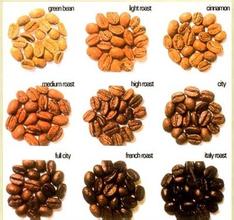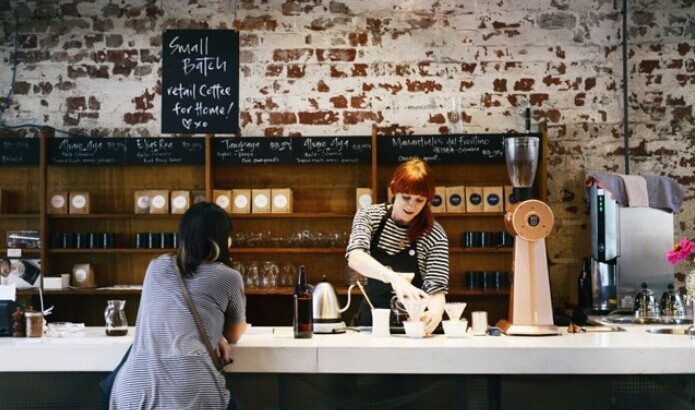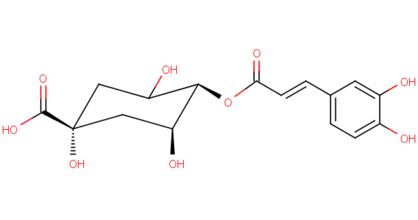Glossary of terms for coffee roasting and roasting-explanation and analysis of professional terms of coffee bean roaster

Roasting is a new advanced field for coffee practitioners, belonging to a new professional form. A mature roaster is not only good at baking boutique coffee to restore the most memorable taste and flavor, but also to have a comprehensive and in-depth understanding of roasting and related!
Glossary of terms for coffee roasting and roasting
After burner
A device that uses a high heat energy burner to reburn the smoke produced by a coffee roaster to achieve smoke suppression. At the same time, it can reduce the smell.
Net basket
The silver skin of the Fujiga dust collector is a stainless steel basket. Can undertake a larger amount of silver than the standard.
Transformers
The device that converts electric power into variable voltage and variable cycle number has the characteristics of control, stability, energy saving and so on.
Ignition transformer
Ignition device. Used for burner ignition of roaster.
Stone remover
A device that removes stones and foreign bodies mixed with coffee beans according to their specific gravity.
Large-scale maintenance
Guess dismantling and cleaning. Maintenance is carried out according to budget. And there is a half-year guarantee for maintenance products.
Stir
Stir and mix.
Cutting sharpening knife
The grinder that grinds coffee beans cuts them up by cutting. It is suitable for espresso and fine research.
Cup test
In order to detect the quality of coffee, coffee beans were roasted and then hot water was injected directly into coffee powder to observe its changes to identify coffee.
Lubricating oil
Industrial grease. Now take the food grade as the standard.
THERMAL
A safety device for overload protection of a motor.
Dust collector
The dust collecting device is used to recover the silver skin discharged by the roaster.
Inner pot
A drum for roasting coffee in a roaster.
Separate exhaust
The standard roaster is baked when the exhaust and cooling are driven by a motor and the exhaust is separated from the cooled motor. It can improve the exhaust efficiency and the performance of continuous baking.
Longtian studio
Fujika Co., Ltd. Fuji Co., Ltd. Apply the mechanical technology accumulated over the years to the roaster and work together to develop a new type of roaster.
Exhaust baffle
Used to control the heat flow in the roaster.
Midpoint
Drop the coffee beans to the lowest temperature after putting them in.
Depending on the input temperature, the temperature of the midpoint will also change, so the baking process is controlled.
Direct fire type
The side wall of the inner pot with raw coffee beans is punched and processed, and the fire of the burner will be in direct contact with the coffee beans, so it is called direct fire type.
Iron fan
Compared with aluminum fan (6 blades), iron fan (8 blades) can increase air volume by about 20%. Distinguish between the resistance of the chimney and the specially customized roaster.
Double inner pot
So that the flame will not directly touch the inner wall to make the inner pot into a double layer, there is an air layer in the middle, and a softer heat source can be baked.
Hot air type
The side of the inner pot is completely wrapped by iron, the back of the burner is punched, and the heat source generated by the lower burner is punched into the interior of the inner pot by the back of the inner pot, and baked with the hot air produced by the burner.
Exhaust pipe
Smoke emitted during baking and its discharge pipe.
Burst (1 burst, 2 explosions)
When the moisture in the coffee bean disappears and the tissue of the coffee bean is destroyed and expands, it will emit "bang bang!"bounce!" the sound of "banging!" This is the burst, the first burst is called "1 explosion", the second is called "2 explosion". The sound of the second explosion is smaller than that of the first explosion, and the sound of the second explosion is the key point to complete the baking.
Collector
The one who picks coffee and cherries.
Protective relay
Protective device in case of no fire
Receiving plate
The part of the coffee roaster under the front cover is called the receiving plate.
Feeding hopper
Temporarily place a funnel container for coffee beans.
Mesh
Refers to the particle size of coffee beans after grinding by a bean grinder.
Source: Beresta's blog
Important Notice :
前街咖啡 FrontStreet Coffee has moved to new addredd:
FrontStreet Coffee Address: 315,Donghua East Road,GuangZhou
Tel:020 38364473
- Prev

How to open a boutique cafe? 15:00 specific list detailed analysis of the operation of a coffee shop
No matter where the cafe goes, it has undoubtedly become a consumption market for people to live, relax and relax. Although domestic coffee is not very popular, it is also loved by most young people. So how to open a coffee shop that is acceptable to more people? There is a famous cafe Auction Rooms in Melbourne, which mainly serves delicious and nutritious brunch and very delicious.
- Next

SCAA Emma Bladyka chlorogenic acid: the importance of chemical changes in chemistry and reality baking
What are they? Many plants contain chlorogenic acid in addition to caffeine. Acids have this very similar structure in the Luyuan Group, and the composition of an ester usually includes caffeic acid and quinic acid as components. All chlorogenic acids belong to a larger class of phenolic acids. In nature, phenolic acids are usually used as defensive compounds by plants, or as a signaling mechanism between plants and soil microorganisms. they
Related
- What is the meaning of lactic acid fermentation with coffee bean treatment?
- How to judge the state of foam by sound?
- How does the latte pull out the unicorn pattern? Come to get for a little trick to improve the flower pull!
- Will flower pulling affect the taste of the latte?
- Do you know the history of coffee?
- The difference between honey treatment and sun washing what is raisin honey treatment?
- What kind of milk can a novice use to make coffee foam to keep the foam longer? The correct method and skills of milking tutorial sharing
- Why do washed coffee beans taste sour? Flavor characteristics of washed Coffee
- Introduction to the skill of how to practice the size and height of water injection around the circle of hand-brewed coffee
- How do beginners practice coffee flower drawing from scratch?

